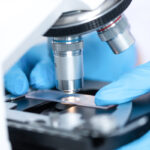IVF and Latest Technology

İçindekiler
ToggleIVF is the last resort for couples who cannot have children and is usually a successful method. However, sometimes it may not be possible to have children with this method. Couples who apply to IVF to have children may be disappointed when they choose the wrong center and do not insist on treatment. This disappointment gives way to hopelessness after a while. However, technology renews itself day by day and finds new solutions to a problem every day IVF It also provides new hope for couples who have lost hope in fertility. Thanks to developing technology, it is possible to maximize the success achieved in in vitro fertilization treatment.
When is technology needed most in IVF?
Generally, there is no great concern if the goal is not achieved in the first IVF treatment. If the desired goal is not achieved after two or more attempts, the couple is subjected to extensive research once more. In particular, it is checked whether there are any problems or abnormalities in the expectant mother’s uterus, such as myomas or polyps, that may prevent the baby from attaching to the uterus.
Technological methods applied in in vitro fertilization treatment
If the first IVF treatment fails, ultrasound and fluid injected into the uterus are used to check if there is a problem or an abnormal structure in the uterine cavity. Another method is hysterosalpingography. However, since this method is a bit painful and has the potential for infection, it is not preferred unless necessary. Instead, hysteroscopy, which is a method that allows examination with a small camera placed inside the uterus, is preferred. This method allows both detailed examination and helps to correct the problem inside the uterus. However, as with any medical intervention, this procedure should be performed by specialist doctors.
What are the factors that prevent the embryo from attaching to the uterus ?
In some in vitro fertilization applications, although the embryo is healthy, there are some obstacles that prevent the embryo from attaching to the uterus:
- One of these may be some fluid accumulation due to blockage in the tubes of the expectant mother. This condition is called HYDROSALPEX. These accumulated fluids can flow into the uterus and prevent pregnancy or, if pregnancy has already occurred, can cause early miscarriage. In such cases, the tubes can be removed with laparoscopic methods or they can be tied off at the point where the tubes and the uterus intersect. In this way, the chance of pregnancy is increased to a degree that should not be underestimated. This condition is one of the most common obstacles seen in expectant mothers in couples undergoing in vitro fertilization treatment.
- Hormonal irregularities in the mother-to-be are also factors that reduce the chance of pregnancy. In this case, the amount of hormones in the blood is measured and brought to the required level. Hormonal imbalances prevent pregnancy and can also cause a miscarriage risk in an existing pregnancy.
Apart from all these, a tissue sample is taken from the expectant mother’s uterus and this sample is multiplied in a laboratory environment. This process is called CO CULTURE method. Embryos are placed in this culture medium and thus embryos are developed in a realistic environment. Since almost every substance necessary for the development of the embryo is present in this artificial womb, there is no situation that will prevent embryo development. This method is used today as an alternative with a high probability of success for couples who have tried in vitro fertilization treatment more than once and have not been successful. Apart from these, chromosomal disorders can also be a factor preventing the embryo from attaching to the mother’s uterus. Even if the embryo looks healthy, it can have a chromosomal disorder and this situation can prevent the embryo from attaching to the mother’s uterus. Preimplantation Genetic Diagnosis (PGD) is the process of giving healthy embryos to the expectant mother by performing genetic tests with cell samples taken from the embryo, thus ensuring that the healthy embryo with the highest probability of attachment is selected. This application aims to increase the chance of pregnancy, reduce the risk of miscarriage and prevent unwanted multiple pregnancies.
This procedure, called Preimplantation Genetic Diagnosis, is most commonly used in IVF attempts that have failed repeatedly. The aim of the IVF method is to achieve healthy pregnancies that can result in live births. Multiple pregnancy is an undesirable and untargeted situation in IVF.





